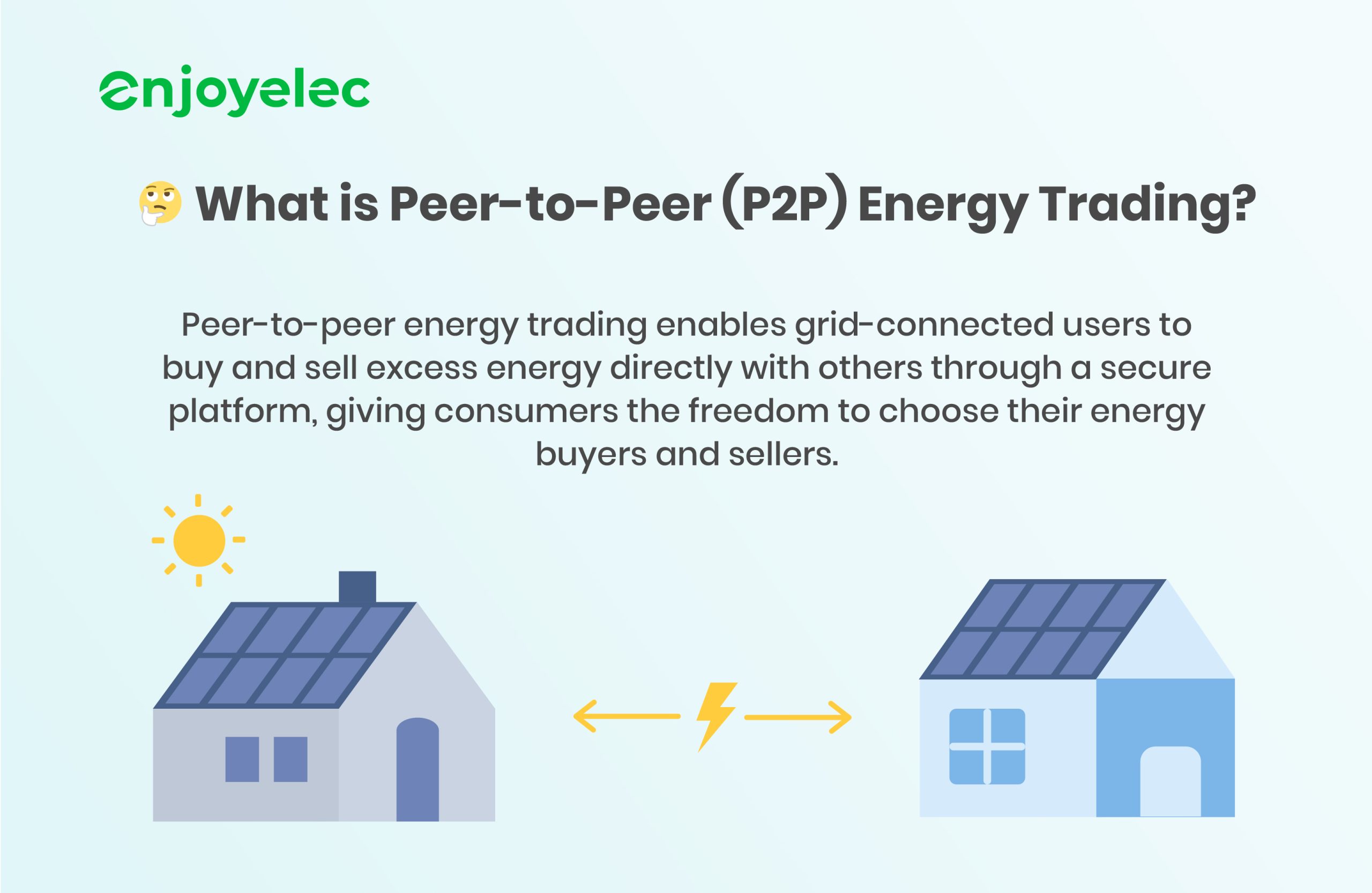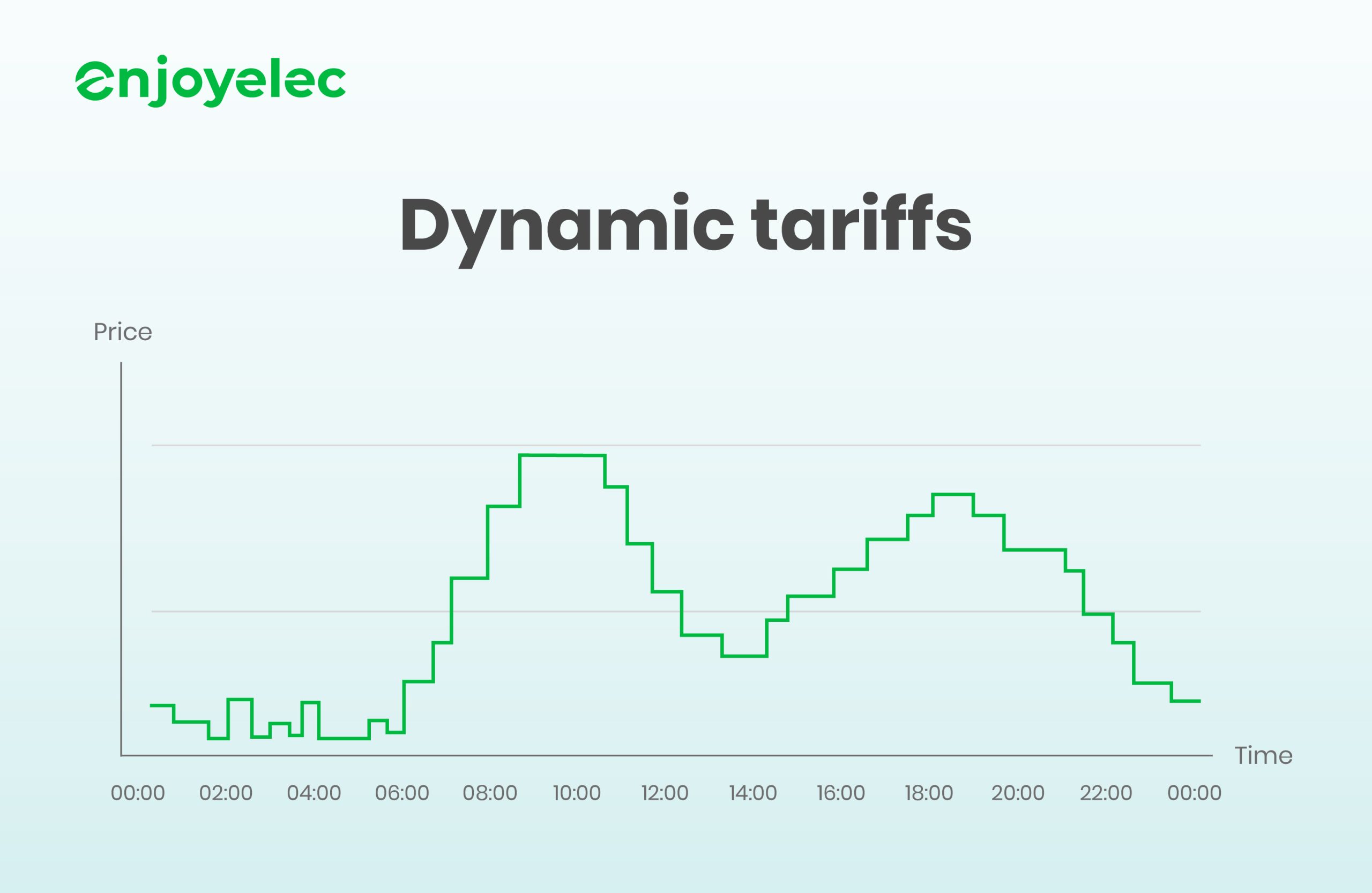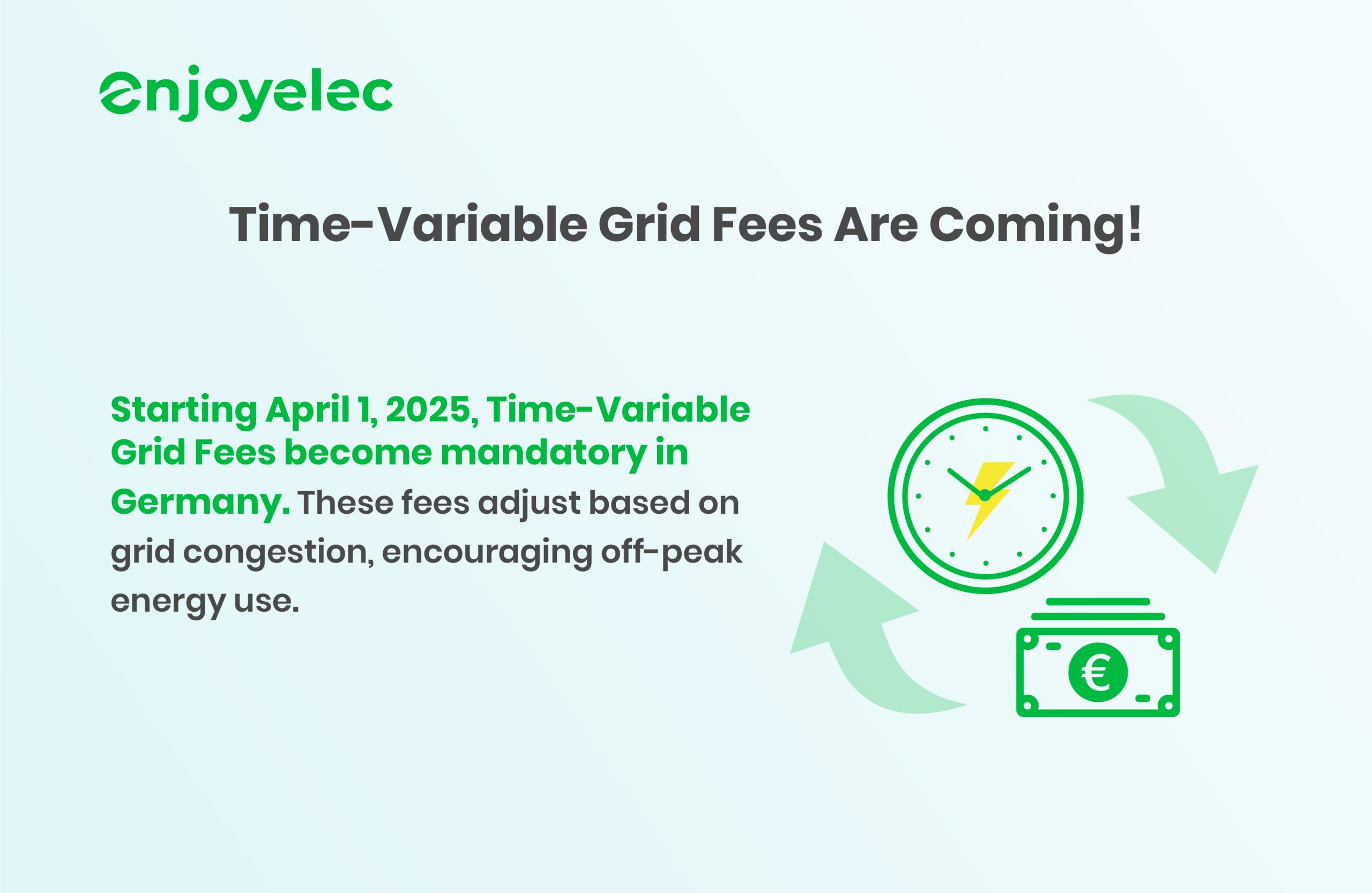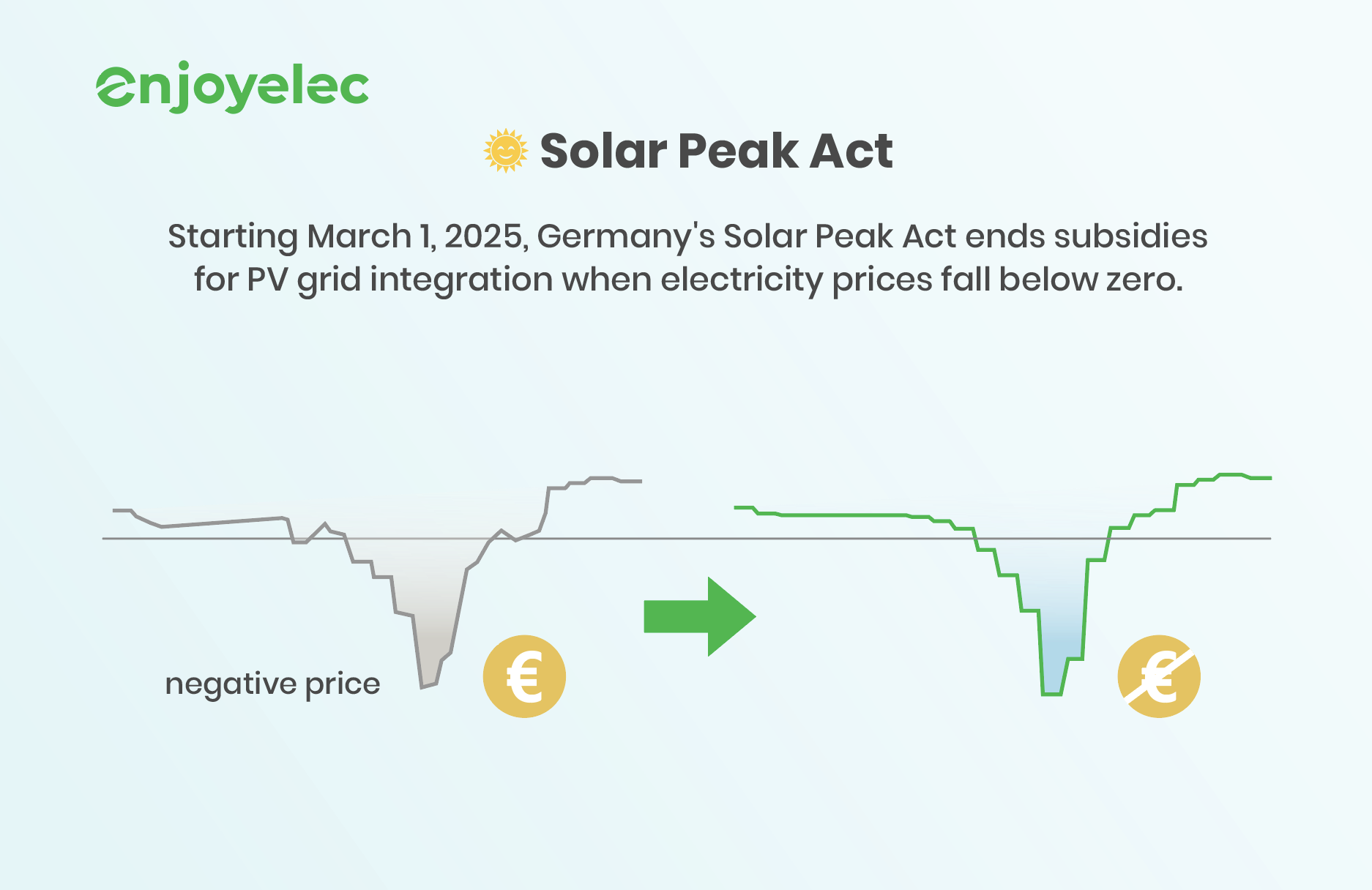Understanding Peer-to-Peer Energy Trading
What is Peer-to-Peer (P2P) energy trading?
Peer-to-peer (P2P) energy trading refers to a decentralized system where individuals or businesses can trade energy directly with each other, typically through a blockchain platform or other digital infrastructure. This system allows energy producers (such as households with solar panels or small-scale renewable energy producers) to sell excess energy directly to consumers or other producers, by passing traditional utility companies.
P2P energy trading is facilitated by platforms that enable transactions, usually utilizing smart contracts for automation, transparency, and security. The process allows for more efficient energy distribution, lower costs, and the potential for individuals to benefit from the sale of excess energy while promoting renewable energy adoption.

How does P2P energy trading works?
P2P energy trading allows consumers, also known as prosumers, to buy and sell electricity directly with each other. This process is enabled by blockchain technology, which ensures that all transactions are transparent, secure, and tamper-proof. Once energy is generated, whether from solar panels or other sources, the blockchain records the transaction, ensuring that each unit of energy is correctly attributed to its source.
At the core of P2P trading are smart contracts, which automatically execute transactions when certain conditions are met. For example, when a prosumer generates more energy than they consume, the excess energy can be sold at a predefined price. These contracts are designed to handle conditions such as energy availability, demand, and fluctuations in pricing, making the system efficient and responsive to real-time market dynamics.
Energy flow management is another critical aspect of P2P energy trading. The platform continuously monitors the energy supply and demand in the market, allowing prosumers to buy and sell energy based on availability. This dynamic pricing mechanism helps balance consumption and generation, ensuring that the grid remains stable and efficient without overloading any part of the system.
P2P energy markets can operate in isolated microgrids or connect to the broader electricity grid. In microgrids, the system operator ensures that supply and demand are balanced within the local network. However, when the P2P network is linked to the main grid, the platform must account for how energy flow between participants affects the local distribution network and interacts with grid operators.
P2P energy trading benefits
Peer-to-peer (P2P) energy trading offers several significant benefits that help transform the way energy is produced, consumed, and managed:
- Affordable Access to Renewable Energy: Consumers without their own renewable energy sources, such as solar panels, can purchase clean energy from neighbors at a competitive price. Those who generate excess energy can sell it at a higher rate than they would receive from traditional feed-in tariffs, which incentivizes renewable energy production.
- Reduced Transmission Costs: Since energy is traded locally between peers, there is less need for long-distance transportation from centralized power plants. This cuts down on the costs associated with maintaining the infrastructure, such as power lines and transformers, which typically account for a large portion of electricity bills.
- Create new economic opportunities: By setting up a platform for buying and selling locally produced energy, community members can tap into a fresh source of income. These P2P networks can integrate energy from diverse sources such as microgrids, energy storage, electric vehicles, and demand response.
- Choice and Transparency: P2P platforms often allow consumers to select where their energy comes from, such as a specific community project or a renewable energy provider they support. Blockchain technology adds another layer of transparency, ensuring that all transactions are public and immutable, fostering trust in the system.
- Environmental and Economic Efficiency: Local energy trading reduces the need for large-scale power generation and transmission, leading to lower overall system costs. This can also lead to more localized, resilient energy grids, which are less vulnerable to centralized system failures.
Challenges and barriers
Peer-to-peer (P2P) energy trading has great potential to transform the energy market, but it faces several challenges that hinder its widespread adoption. One of the main issues is regulatory complexity. Most current energy regulations are designed for traditional energy systems, and they may not support the decentralized nature of P2P trading. This can make it difficult for new trading models to operate within the existing legal framework.
Another significant challenge is technological. P2P energy trading requires platforms that can handle large amounts of data, ensure security, and work with different energy systems seamlessly. The technology must be scalable, meaning it can grow as more people participate, and interoperable, meaning it works well with various devices and systems used by participants. Additionally, concerns about data privacy need to be addressed to ensure participants’ information is safe.
Market-related challenges also arise, especially in terms of integrating P2P energy trading with the current energy markets. Traditional energy markets may not be equipped to handle decentralized trading, and new market designs may be necessary. To overcome these obstacles, cooperation between policymakers, energy providers, and technology developers is crucial to create a more adaptable and efficient system for P2P trading.
The future of P2P energy trading
P2P energy trading represents a significant shift in the way energy is produced, consumed, and exchanged. By empowering consumers to become both energy producers and traders, it decentralizes the traditional utility model, fostering a more flexible and democratic energy market. Instead of relying solely on centralized utilities, individuals and communities can generate renewable energy locally—such as through solar panels or wind turbines—and trade it directly with each other. This approach challenges the conventional structure of energy distribution and opens up new opportunities for local, renewable energy solutions.
As global energy demand continues to rise, particularly in energy-intensive sectors like data centers, the need to transition to cleaner, more sustainable energy sources become increasingly urgent. P2P trading helps address this by enabling more efficient use of renewable energy, reducing dependence on fossil fuels, and optimizing energy distribution. It also allows consumers to take control of their energy costs, as they can buy and sell electricity based on real-time market conditions. Far from being a mere response to current market inefficiencies, P2P energy trading is a key pillar of the future energy ecosystem, driving both economic opportunities and environmental sustainability while contributing to a cleaner, more resilient energy grid.
enjoyelec’s HEMS plays a key role in supporting the shift toward a decentralized energy future. By seamlessly integrating renewable energy sources like solar and batteries with AI-powered management, it empowers households to optimize energy consumption, reduce costs, and enhance energy independence. As decentralized energy solutions, such as P2P trading, reshape the market, our HEMS focuses on enabling smarter, greener, and more efficient energy practices, aligning with the global push for sustainability and resilience in the energy ecosystem.
Download our app today and take the first step toward smarter energy management.


Connect with us at http://www.linkedin.com/company/enjoyelec for the latest updates, insights, and news. We look forward to engaging with you and sharing our journey towards a smarter energy future.





